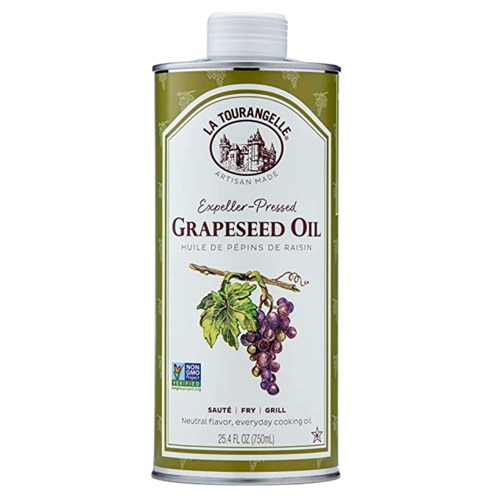Get this: One out of two Americans aged 30 or up has gum disease, according to the Centers for Disease Control and Prevention. That’s a whopping 64.7 million adults! Gum disease, formally known as periodontal disease, is marked by chronic inflammation of the tissues that support our pearly whites, and if left unchecked can lead to swollen or bleeding gums, persistent bad breath and eventually tooth loss. Worse yet, the trouble doesn’t always end in the mouth. Several studies show links between gum disease and heart disease, diabetes and cancer.
Clearly, our gums need a little—OK, a lot—of love. Gum disease stems from plaque, that film of bacteria that builds up on teeth and gums when we don’t take proper care of our mouths—and that we’ve all heard since our very first dentist visits that we need to keep at bay. Experts say if we always ate the perfect blend of nutrients and brushed and flossed religiously, plaque wouldn’t be a problem.
“If you are biochemically balanced, you shouldn’t make plaque,” says Diane Meyer, DDS, of Holistic Dentistry Illinois in Downers Grove, Ill. However, as the staggering statistics show, millions of us don’t make the grade.
But that doesn’t mean we can’t do better. In fact, there are several easy steps you can take to get your gums—and therefore your overall wellness—on a healthier track. First, if you smoke, quit now; tobacco exacerbates risk of gum disease. Also prevent plaque pileup by brushing your teeth after every meal and before bed, flossing at least once a day and getting a dental exam twice a year, as the American Academy of Periodontology recommends. But beyond these starter steps, here are our top three ways to safeguard your gums.
1. Gum-ify your diet
The foods you eat greatly impact gum health. “In general, the worst foods for the gums are the same as those for the teeth: sticky carbohydrates such as cake with icing, sticky candy, etc. Dried fruit is the worst,” says Ana Brightleaf, DDS, of Brightleaf Cosmetic & Holistic Dentistry in Santa Monica, Calif. “These become excellent food for the bacteria to multiply rapidly and, when not cleaned off quickly, contribute to swollen and bleeding gums.”
But the problem runs even deeper than sugars clinging to gums and fostering bacteria growth. Meyer says that eating too many of these foods disrupts your biochemistry and nutritional balance, which is really where the trouble begins. “If you have plaque, then perhaps your calcium or phosphorous levels are off balance, or your vitamin D or magnesium levels might be low,” she says. “Each person has to delve into his or her own personal nutrition to determine what’s lacking.” Speaking broad spectrum, however, Meyer suggests avoiding processed foods—which are often packed with excess, hidden sugars—and sticking to natural and organic products when possible.
Brightleaf makes some specific recommendations: “Foods high in antioxidant vitamins C, A and B complex are particularly beneficial, so go for leafy green vegetables, carrots, celery and whole fresh fruits. Raw foods are better.”
2. Slosh mouthwash
There’s some speculation that alcohol-containing mouthwashes may raise risk of oral cancer, so use a solution made from oils of antimicrobial herbs. “Studies show that these antibacterial agents will decrease the bacterial count in the mouth and decrease gum disease,” Brightlef says. Indeed, in a study published in the Journal of Clinical Dentistry in July 2009, 116 periodontal disease patients swished mouth rinses made from two different antimicrobial herbal oils or an essential oil (types not specified) twice a day for three months. All three solutions significantly lessened the amount of plaque and disease-causing bacteria present in their mouths by trial’s end. Another study, from the May 2008 issue of the Journal of the American Dental Association, found that an herbal mouth rinse inhibited growth of nearly 40 different types of oral bacteria.
So which types of herbal oils are best? Meyer says tea tree, oregano, grapeseed and almond oils all work great, depending on what you can tolerate—some people are sensitive or allergic to certain types. Just mix one with water to make a potent bacteria-battling mouth rinse. Or, go with a premade solution. Brightleaf suggests two brands sold only in dental offices: Tooth & Gums Tonic and PerioClear. “Both have bacteriostatic essential oils such as eucalyptus and cinnamon, as well as nutritive herbs for gum health.”
3. Bust a sweat, bust stress
What isn’t exercise good for? Along with protecting your heart and keeping you at a healthy weight, those regular stair-stepper sessions and spin classes may also benefit your gums, according to a study published in the Journal of Periodontology in August 2010. Looking at 1,160 Japanese adults aged 20 to 77, researchers used body mass index (BMI) and fat percentage to estimate VO2 max output during exercise (a precise marker of physical fitness) and compared those figures to gum health. They found that those with the lowest BMIs and highest (best) VO2 max had significantly lower incidence of periodontal disease.
Exercise is also an effective way to stymie stress—which research suggests also can impact gum health. A study published in the same journal in February 2009 examined levels of stress, depression and salivary cortisol (a biomarker of stress) in periodontal patients. The scientists noted a direct correlation between depression and high stress levels and severity of gum disease. They posit that this may be partly due to the fact that people suffering from depression or anxiety might be more likely neglect oral hygiene. Regardless, a relationship exists, suggesting that stressing less can give your gums a break.




